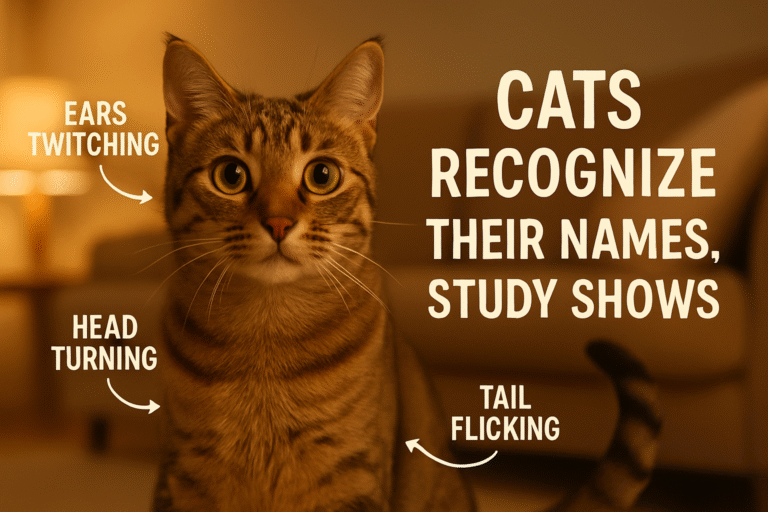Discover everything you need to know about Cat Nutrition and build a healthier feline diet with proper cat food and smart pet nutrition tips.
Table of Contents
ToggleWhy Your Cat’s Diet Might Be Slowly Hurting Them
If you’re like most cat owners, you’re probably feeding your furry friend what seems “good enough.” But here’s the truth: poor cat nutrition can silently affect your pet’s energy, immunity, and lifespan. Let’s break down how to feed your cat the right way, prevent common nutritional mistakes, and build a long-term plan for better health.
1. Understanding the Basics of Cat Nutrition
Cats are obligate carnivores. This means they require animal-based proteins to survive and thrive. Unlike dogs, they don’t digest carbohydrates efficiently, and missing essential nutrients can quickly lead to deficiencies.
Key Nutrients Cats Need:
- Protein (from meat or fish) – for muscle and tissue repair
- Taurine – vital amino acid only found in animal tissue
- Arginine – helps detoxify the blood
- Fatty acids – for skin, coat, and brain health
- Vitamins A, D, E, K – fat-soluble vitamins cats can’t synthesize efficiently
- Water – often overlooked, but critical to prevent urinary issues
Cats also have a low thirst drive, making wet cat food important to maintain hydration.
2. Dry Food vs. Wet Food: Which Is Better?
Dry Cat Food:
- Convenient and affordable
- Helps with dental cleaning (to a small extent)
- Often high in carbohydrates
Wet Cat Food:
- Higher in moisture content
- Closer to a cat’s natural diet
- Better for kidney and urinary tract health
Verdict: A mix of both—prioritizing wet food for hydration—offers a balanced approach.
3. The Hidden Dangers in Commercial Cat Food
Many store-bought cat foods are full of fillers, by-products, and additives. These ingredients can do more harm than good in the long run.
Ingredients to Avoid:
- Corn, wheat, or soy (used as cheap fillers)
- Meat by-products (low-quality proteins)
- Artificial colors and preservatives (linked to health issues)
Always read the label. The first three ingredients should be real meat or fish.
4. Homemade vs. Commercial: Can You Cook for Your Cat?
Pros of Homemade Feline Diets:
- Total control over ingredients
- No fillers or preservatives
- Can be tailored to your cat’s allergies or sensitivities
Cons:
- Risk of nutrient imbalance
- Time-consuming
- Requires veterinary or nutritionist guidance
Important: Never guess your cat’s nutrient needs. Consult a vet before switching to homemade meals.
5. Feeding Frequency and Portion Control
Feeding isn’t just about what you give your cat, but also how much and how often.
General Guidelines:
- Kittens: 3–4 times a day
- Adults: Twice a day
- Seniors: Twice a day with special care for kidney health
Use feeding charts and monitor weight regularly. Overfeeding is a major contributor to feline obesity.
6. Special Diets for Special Needs
Some cats need customized diets due to health conditions. If your cat suffers from any of the following, a tailored feline diet may be necessary:
- Diabetes – Low-carb, high-protein diet
- Kidney disease – Low-protein and phosphorus diets
- Obesity – Controlled calorie intake with high-fiber foods
- Allergies – Limited-ingredient or hypoallergenic food
Talk to a vet before changing food to manage medical conditions effectively.
7. Transitioning to a Healthier Cat Diet
Cats are creatures of habit. Rapid diet changes can cause stress or digestive upset.
How to Transition:
- Mix 75% old food with 25% new food for the first 3 days.
- Gradually shift the ratio every few days.
- Over 7–10 days, reach 100% of the new diet.
Look for signs like vomiting, diarrhea, or changes in appetite. If you see any, slow down the transition.
8. Common Cat Feeding Mistakes to Avoid
- Feeding dog food (it lacks taurine)
- Leaving food out all day (leads to overeating)
- Giving too many treats (adds unnecessary calories)
- Skipping water bowls or fountains (leads to dehydration)
Always monitor your cat’s behavior and weight as clues to their pet nutrition.
9. Natural Supplements: Are They Worth It?
While most balanced cat foods meet nutritional needs, some cats benefit from:
- Fish oil – for shiny coats and joint health
- Probiotics – for gut health
- Glucosamine – for older cats with arthritis
But beware: never give human supplements or guess dosages. Use vet-approved products only.
10. Final Thoughts: Building the Best Cat Nutrition Plan
Every cat is different. The best cat nutrition plan is one that’s:
- Vet-approved
- Tailored to age, weight, and activity
- Balanced with hydration and high-quality protein
- Adjusted over time with age and health needs
Don’t fall for marketing gimmicks. Trust the science. Your cat’s life depends on it.
Take Action Today
If you’re unsure where to start, schedule a nutritional consultation with your vet. A few simple changes today could add years to your cat’s life.
Frequently Asked Questions (FAQs)
Q1: Can I feed my cat a vegan diet?
A: No. Cats are obligate carnivores and need animal-based proteins like taurine for survival.
Q2: How much water should my cat drink daily?
A: Ideally, cats should consume 50–60 ml of water per kg of body weight. Wet food helps meet this requirement.
Q3: Is grain-free food better?
A: Not always. Grain-free doesn’t mean better quality. Focus on high-protein, meat-based options instead.
Recent Posts









Related Topics
Copyright © 2025 The Pet Blog – Expert Tips, Care Guides & Fun Facts for Every Pet Lover.

